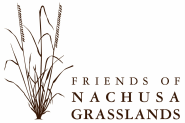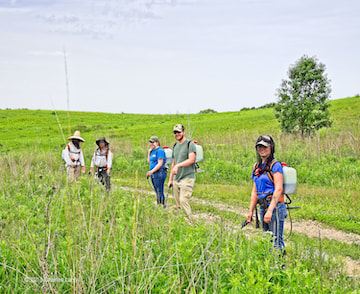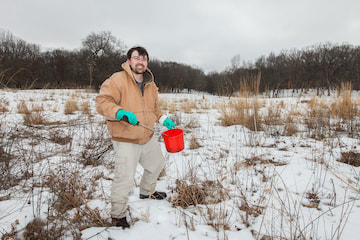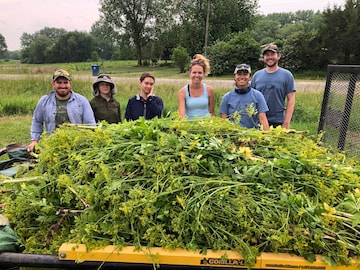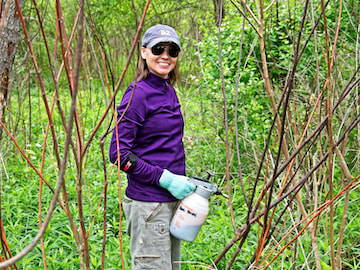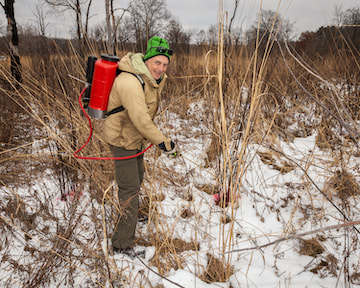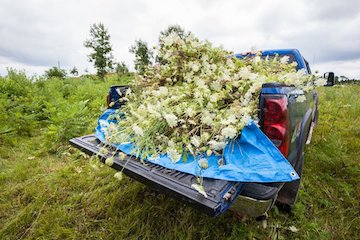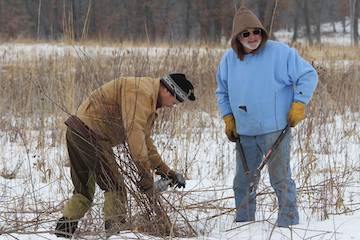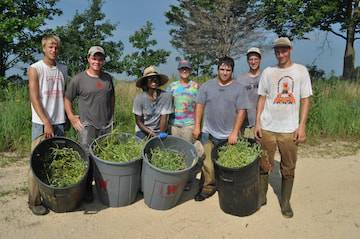Invasive Plants Managed at Nachusa Grasslands
Non-native, invasive plants have been intentionally or accidentally introduced by humans into areas outside of their natural habitats. These aliens can spread rapidly, displacing or destroying native species.
The Nachusa Grasslands staff and stewards manage about 30 different invasive plants. Based on their area responsibilities, they often prioritize controlling certain species over others. The following are a few of the plants that our staff and stewards deal with throughout the year.
The Nachusa Grasslands staff and stewards manage about 30 different invasive plants. Based on their area responsibilities, they often prioritize controlling certain species over others. The following are a few of the plants that our staff and stewards deal with throughout the year.
|
Amur Honeysuckle
Autumn and Russian Olive
Birdsfoot Trefoil
Common Buckthorn
Multiflora Rose
|
Queen Anne's Lace
Reed Canary Grass
Wild Parsnip
Yellow and White Sweet Clover
|
For more information on invasives at Nachusa Grasslands, see the Managing Invasive Plants, Herbicide Use, and Invasive Identification web pages.
UPDATED 03/2020
